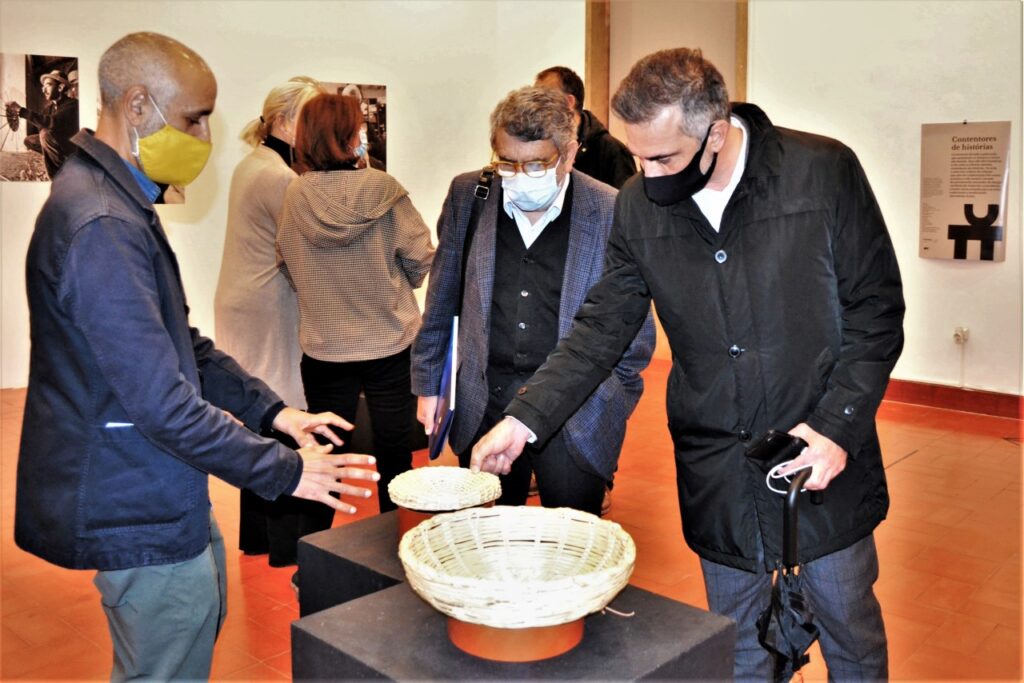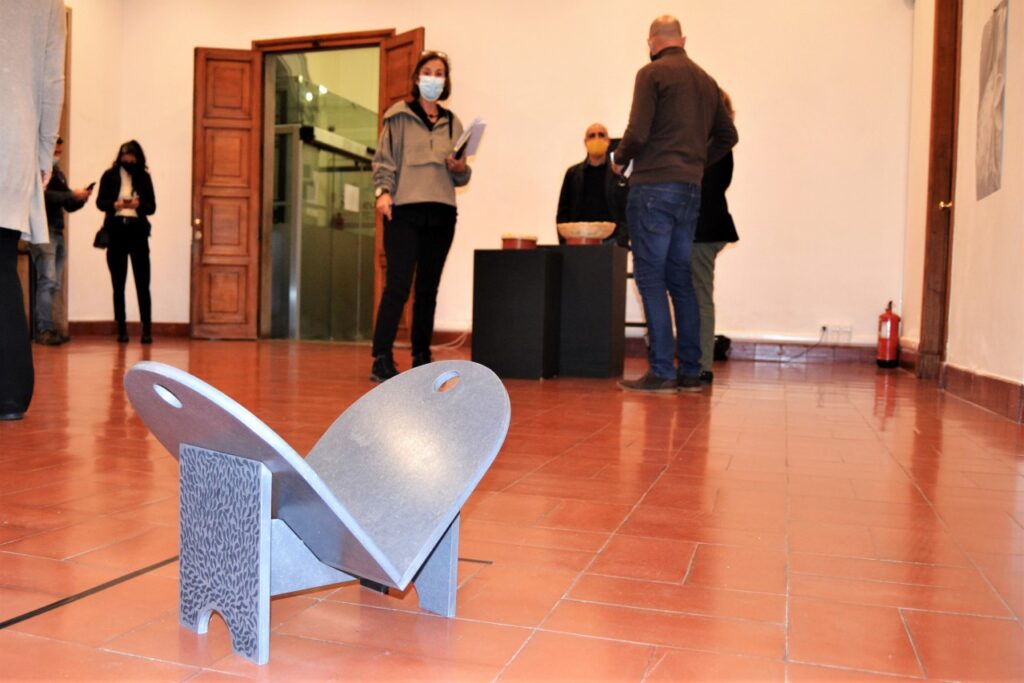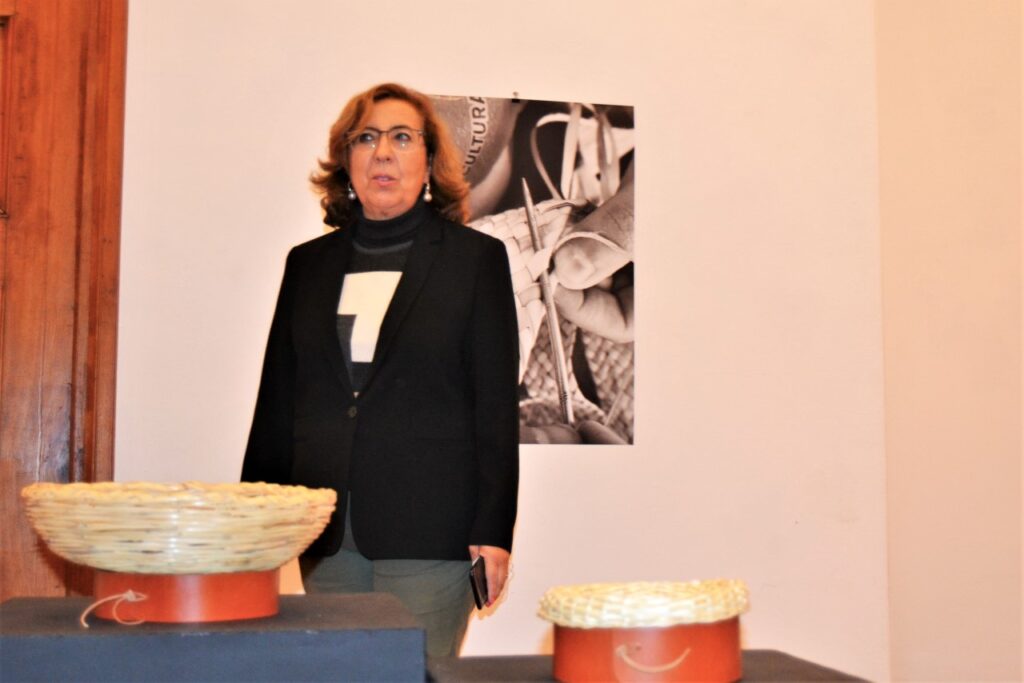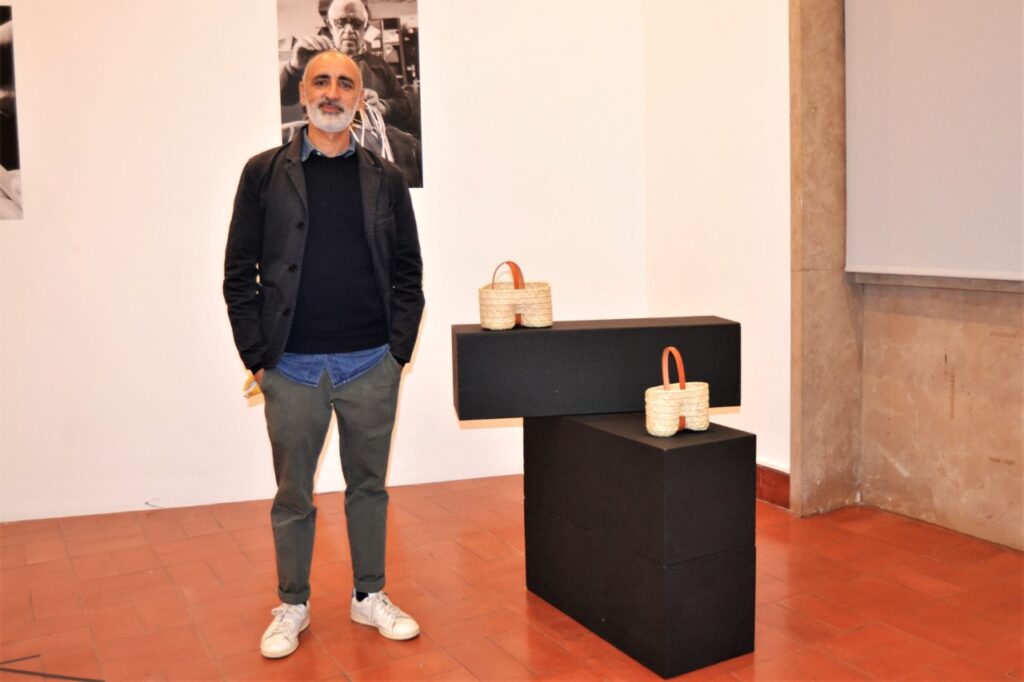The techniques and expertise came from the three southern regions of the Iberian Peninsula, but the new handicrafts from the collection “Contentores de Histórias”, which are on display until the 18th at the headquarters of the Regional Coordination and Development Commission (CCDR) of the Algarve , in Faro, have no nationality and the creativity that gave rise to them did not respect borders.
The TASA – Ancestral Techniques, Current Solutions project challenged artisans from the Algarve, Alentejo and Andalusia to collaborate with product designer Hugo da Silva and communication designer Joana Prudêncio in the creation of a collection that brings together knowledge and techniques from the three regions.
Artisans José Rosa, Martinho Jacinto and Vanessa Flórido (Algarve), Vitor Caço (Alentejo) and Antonio Nuñez and Rogelio Moreno (Andalusia) contributed with their knowledge of the use of various materials, including palm, cane, wicker, wood and leather, to create «pieces that combine sustainable materials, creating new solutions for traditional arts and extolling local identities», according to Proactivetur, the company that promotes TASA, a project promoted by CCDR do Algarve.
«This exhibition was born from the desire to make products between Andalusia, Alentejo and Algarve. Hence, we took the idea of containers, which is a product that is common in any culture, and combined artisans with the techniques of the three regions. From here we created nine products, of which only one has a technique unique to Alentejo. All the others are a combination», he revealed to the Sul Informação Hugo da Silva, creative director of the new TASA collection.
«It's almost a dialogue, the stories are told here, in which we have the artisan from Alentejo working with the one from Andalusia, we have the one from Andalusia working with the one from the Algarve. And this communication between the pieces, this line that continues between the pieces, is what tells stories», he added.

To get here, it was necessary to go to those who have ancestral techniques. To work the wicker, artisan José Rosa, from Monchique, was chosen. The palm, on the other hand, was worked “in two situations, taking advantage of a relationship between master and apprentice.
The master is António Nuñez, an Andalusian palm specialist “with exceptional work”. The apprentice is Vanessa Flórido, one of the artisans trained by TASA in woven course of the “Artisans of the XNUMXst Century” Program, who was “developing the same pieces with him”. The final product “was attractive on a technical level and the collaboration between the two was interesting”.
«Then we have the furniture from Alentejo, which is very traditional furniture. This time, we had a young artisan, who already worked as an apprentice, but since the companies he worked for closed, he has always tried to get back to wood and make products/materials inspired by Alentejo furniture. That's why we worked with him», revealed Hugo da Silva.
In this case, the innovation was introduced not only by the design, but also by the material used.
«We were looking for an innovative side with material that is Portuguese, 100% Portuguese, produced in Portugal, which is Valchromat wood agglomerate, which being an authentic national product, we thought it had many aspects to bring to Alentejo furniture, in this case, to these pieces,” he explained.
The decorations that embellish the pieces were crafted by Vítor Caço, «inspired by the leaves and flowers, which are normal and characteristic of Alentejo furniture and which identify it».

«We also have sugarcane, which was Martinho Jacinto, here in the Algarve, who worked on it. And then there's the skin. We went to Ubrique, in Andalusia, which is a land where almost the entire population is specialized in skin and works the skin in some way, either in sales, or in treatment, or in some part of the process. And António and Rogélio were the two artisans who worked with us, they already have a great knowledge of working the skin», said the coordinator of the collection “Containers of stories”.
Ubrique, a municipality in the region of Cadiz, is located in a mountain area, in a place that has always had plenty of water. “That's why the treatment and use of the skin was born. At the moment, they produce for international brands, because they make everything, from the most manual pieces to the most technical. And so we found some good people to work with the skin, who had the know-how who could help us here».
The joining of the leather with other materials also aimed to “elevate” the pieces, bearing in mind that this is seen “as a refined material”. Sugarcane, on the other hand, «for example, is not seen like that, but it takes a lot of work, it has a hard and long process to produce».
In fact, when he talks about elevating the pieces, Hugo da Silva's perspective is precisely this: to show that all techniques are noble. Thus, in some of the pieces, the base is made of leather and the piece itself, «the largest container, which is the predominance of the piece, is in cane, to try to elevate this status that the product ends up having».
For now, there are only the prototypes, which are on display at the CCDR, in Faro, but the TASA team will «start work at the production level and finish some details, so that we can have the parts for sale on the website and in the store», something that should happen «next year».

“Containers of stories” is a project that is made in the context of the Euroregion Alentejo, Algarve and Andalusia, so it is “in each of these pieces, which for us is also very important”, revealed, in turn, Maria de Lurdes Carvalho, Director of Regional Development Services at CCDR Algarve.
“It is also very important for the aspect of regional development because, in fact, the handicraft being made by people, with indigenous products, with products from the region, is extremely important for the development of the region. It doesn't seem to be large but in fact it is," he told the Sul Informação the same person responsible.
This is a project, co-financed by the Operational Program for Cross-border Cooperation Spain Portugal (POCTEP), within the scope of the project GIT_EURO_AAA_2020 – Alentejo-Algarve-Andalusia Cross-border Initiatives Office, whose beneficiaries are the Junta Autónoma de Andalusia, the Coordination Commission and Algarve Regional Development and the Alentejo Regional Coordination and Development Commission.
Help us to do the Sul Informação!
Contribute your donation so that we can continue to make your journal!
Click here to support us (Paypal)
Or use our IBAN PT50 0018 0003 38929600020 44



















Comments